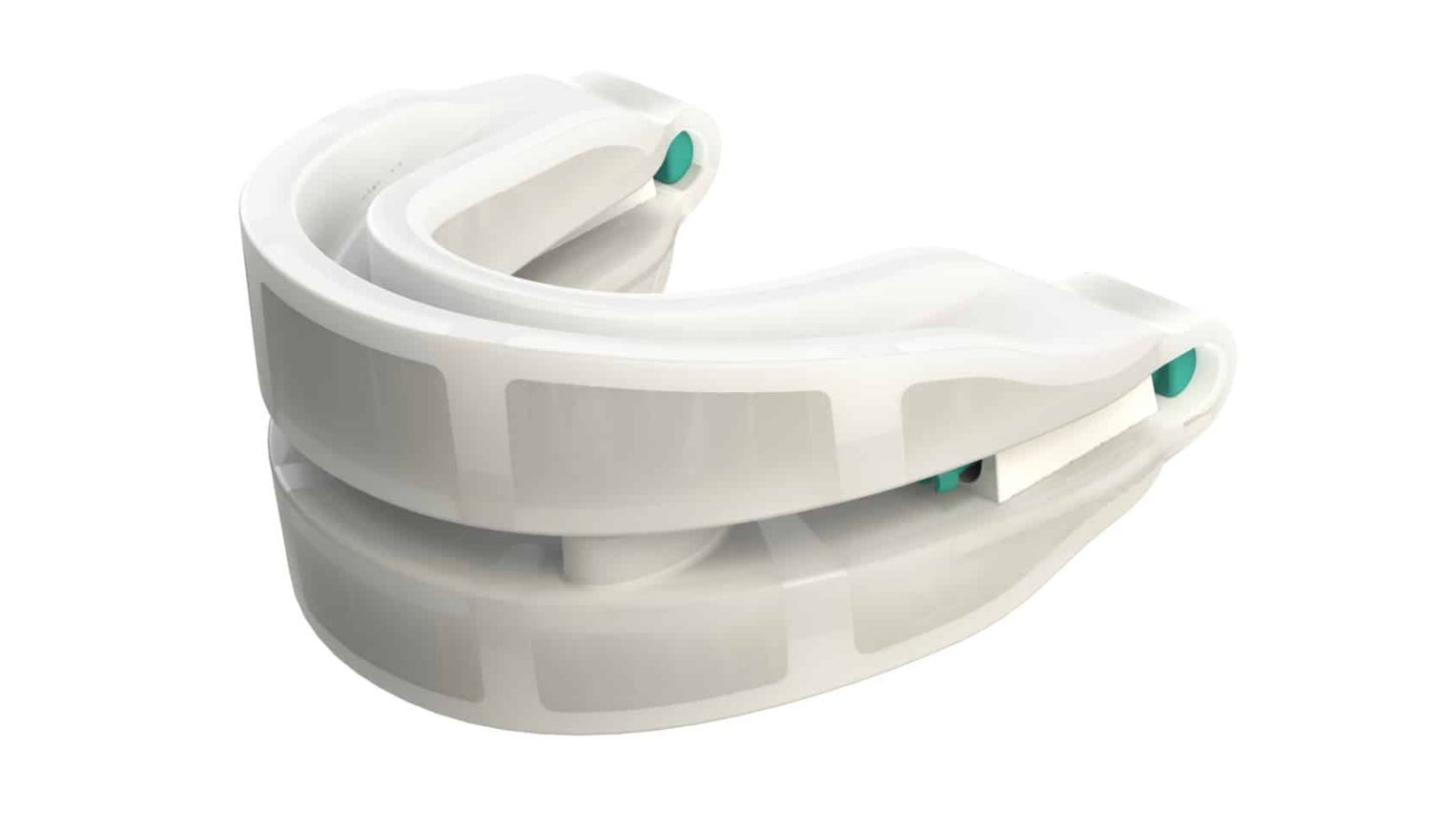What is an oral device?
Oral devices – also known as snore guards and mandibular advancement devices (MADs) – look similar to gum shields. They can be moulded using a boil-and-bite method, or created by a dentist from your dental impressions. Oral devices work by moving your lower jaw slightly forward; this helps to keep your airway open, stopping it from collapsing during the night. Wearing an oral device allows you to breathe more easily, and helps to reduce or eliminate snoring and often also sleep apnoea.

Do you need help with any of the following?
Moulding the device on your teeth
Achieving a good moulding is key to getting the best results from your oral device. The device should fit securely and centrally on your teeth, allowing it to remain in the correct position while you sleep.
You can find full instructions detailing how to mould the Snoreeze Oral Device here. If you’d prefer to watch our step-by-step instruction video, you can find that below.
Getting used to wearing it
If you’ve never worn an oral device before, it may be helpful for you to get used to the feel of the device before you start sleeping with it in. Try wearing your oral device for an hour in the evening to help your mouth grow accustomed to it. You may experience some salivation in the first hour but this usually quickly disappears.
The first few times you use an oral device, your jaw might feel a little sore in the morning. This is fairly common as your jaw is being held in a particular position all night. Persevering with the oral device should reduce any jaw discomfort, as over a few days/weeks, your body will adjust to wearing it. Just like a new pair of shoes, you need time to “break it in”.
Finding the right level of advancement
It’s important to adjust the device to the correct setting in order to treat your snoring/obstructive sleep apnoea. For the first few nights, the screws on your oral device should be fully screwed in. If you find that you’re still snoring, turn each screw anti-clockwise by 180 degrees (half a turn) and test the new setting out for 2-3 nights. It’s easiest to adjust with the device folded “inside out” with the screws outside on top. You can repeat this until your snoring is reduced, or has disappeared.
If any discomfort when wearing your oral device persists for more than 2-3 nights, you can easily change to a different setting. Before you do this, remember that it’s important to adjust your device slowly – you’re aiming for the minimum amount of jaw advancement needed to reduce your snoring or sleep apnoea. Simply turn the screws on the oral device in a clockwise direction: this will help move your jaw backwards, and any tension should disappear.